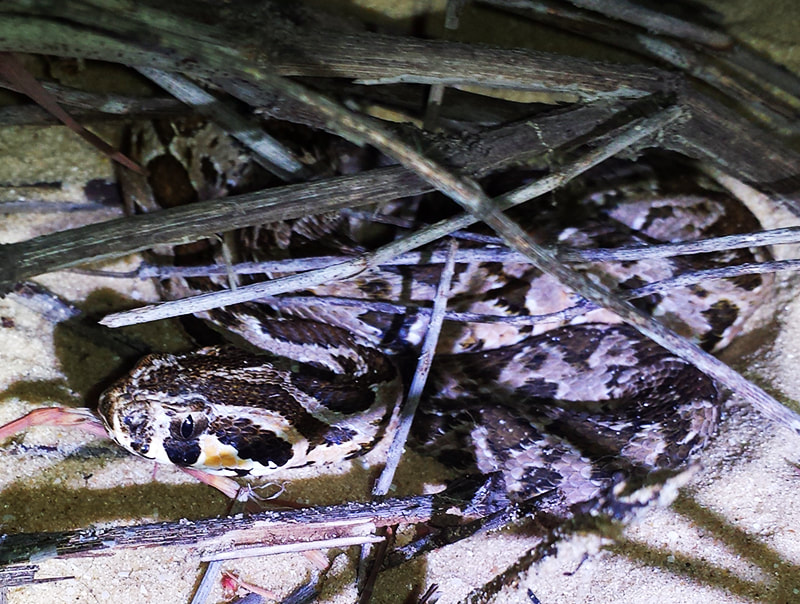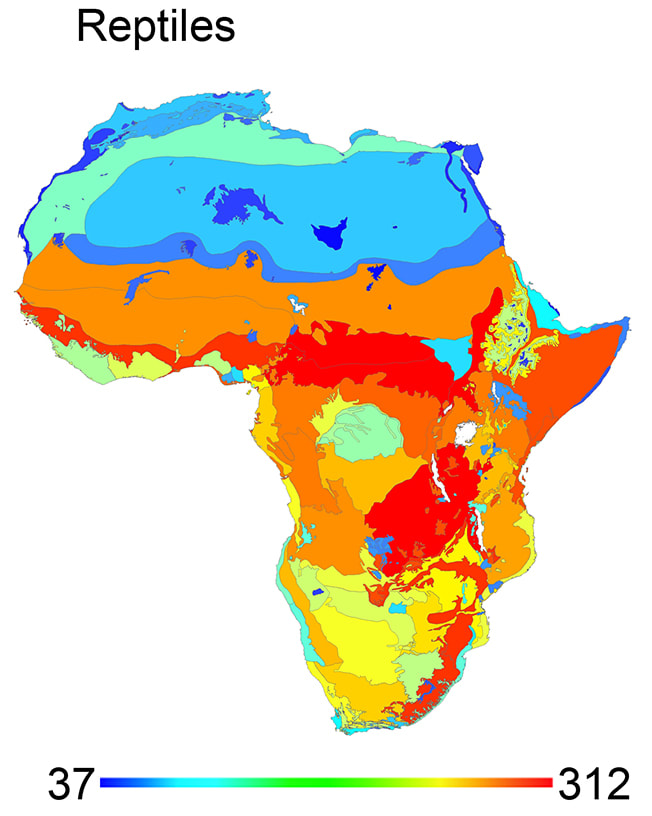| Until now reptile diversity gradients have remained largely unmapped and the least studied of the terrestrial vertebrates, especially in Africa. This is an important distinction because reptiles are an extremely diverse class of terrestrial vertebrates (over 10,000 species and counting), and as ectotherms, which often thrive in arid regions, their diversity patterns are thought to differ from the classic latitudinal gradient of the other land vertebrates (amphibians, birds, and mammals). In addition, the distinct reptile lineages - amphisbaenians, crocodiles, lizards, snakes, and turtles are likely to respond differently to environmental variables. |
| Here is the product of all of that hard work - the first comprehensive richness map of all reptile species in Africa. The colour codes correspond to the number of species from low (blue) to high (red). It shows that the reptile richness map is largely congruent with previously mapped amphibian, bird, and mammal richness showing the classic species latitudinal gradient, including high richness in the arid regions not seen in the other vertebrates. But when you look at the reptile groups distinctly you see that while the overall reptile richness map mostly resembles snakes, lizards in particular are qualitatively very different. Lizard richness hotspots are widely dispersed with high diversity in tropical regions, as well as arid and mountainous areas, where the distribution of the other reptile and non-reptile groups is relatively low. |




 RSS Feed
RSS Feed
